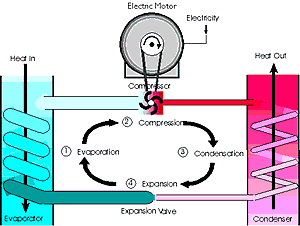
 |
|
 Purchasing a brand name that has a reputation for quality and reliability can save you headaches and extra expense down the road. New Carrier air conditioners and split systems, for example, undergo 34 quality tests and checks during production, with more than 20 of these being performed on every unit - not just on random samples. Heat pumps have heating efficiency ratings, indicated as an HSPF (Heating Seasonal Performance Factor). In general, the higher the SEER or HSPF rating, the less electricity the unit will use to cool (or heat) your home. In 1992, the government established minimum efficiency standards for units installed in new homes at 10.0 SEER and 6.8 HSPF. Most air conditioners and heat pumps manufactured before 1992 had SEER ratings below 7.0 and HSPF ratings below 5.0. Air conditioners and heat pumps manufactured today have SEER ratings that range from 10.0 to about 17. Heat pumps are available with HSPF ratings from about 6.8 to 10.0. Usually, the higher the efficiency, the more expensive the unit. If you live in a warm and/or humid climate, you will probably see the higher cost of a high-efficiency air conditioner or heat pump paid back (through lower utility bills) in a few short years. Your dealer can use cooling data from your area to help you determine about how long it would take you to recover the additional cost in energy savings. Remember that your heat pump or air conditioner is a "split system," which means that there is an outdoor unit (condenser) and an indoor unit (coil). If you're replacing an existing system, both units should be replaced to make sure your new condensing unit gives you optimal performance, efficiency and comfort. Some air conditioners and heat pumps offer additional features that provide greater comfort (as well as additional energy savings). Two-speed units can run on low speed (using 50% of the energy) up to 80% of the time, so they operate more quietly and run for longer periods of time than single-speed models. Longer operating periods translate into fewer on/off cycles, fewer drafts and much smaller temperature swings - only two or three degrees instead of the four-degree swings common with single-speed units. Plus, better air circulation helps prevent air "stratification" - warm air rising to the ceiling and cold air settling on the floor. |
|
Call us at 212-555-4321 for emergency service or a free estimate on upgrading your existing system. |